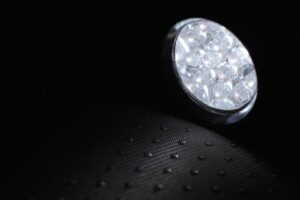The temperate climate here on Vancouver Island affords us with virtually limitless opportunities for outdoor adventures all year long. Where else can one enjoy a round of golf in the morning then spend the afternoon skiing down nearby scenic mountains in the afternoon? As idyllic as this is, our fall and winter months can bring heavy wind and rain causing localized flooding and power outages. It is important to be prepared for such occurrences and to also remember that Vancouver Island is situated in an earthquake zone. Get all the important information regarding the specifics about home insurance in Victoria and what it takes to protect your family, home, and personal belongings.
The first step to keeping ourselves and our loved ones safe is to have a plan in case of such emergencies, along with an emergency kit that is easily accessible by anyone in the household. The basic supplies that every emergency kit should contain include:
- A one-week supply of non-perishable foods with a manual can opener
- Four litres of water per person per day. This will provide enough water for drinking and sanitation purposes
- Phone charger/battery bank
- Radio, either battery-powered or hand-crank model
- Flashlight, with spare batteries
- First-aid kit and medications
- Copies of important documents including insurance information and contacts
- Cash – should be small denominations
- Dust mask – this is important in earthquake situations

Photo by engin akyurt on Unsplash
These items should be stored in a place that is easy to get to such as your garage or hall closet and can be kept in a container or two or even in a couple of duffle bags.
If you find that you need to leave your home quickly for safety, a Grab-and-Go Bag should be at the ready. A few of the items that you will want in this smaller emergency kit would include:
- Water
- Ready-to-Eat food
- Phone charger/battery bank
- Radio
- First-aid kit
- Pen and note pad
- Whistle
- Copies of important documents such as insurance information
You will notice that in both kits, copies of important documents, including insurance information are listed under items that should be included. While personal safety always comes first, the reality is that there may be damage to your home, personal belongings, or vehicles. There is also the possibility that you may not be able to return home for a while. In such cases knowing how to connect with your insurance broker is critical. An experienced SeaFirst broker is always ready to take of your immediate needs in the case of an earthquake or other such emergencies.
With many owners and renters living in multi-family housing, be it townhomes, condos, or apartments, there are unique issues that need to be considered in the case of an emergency. Whether it is due to an extended power outage, flooding, severe wind damage, or earthquake, it is important to have established relationships with fellow tenants. A chat with a Seafirst Insurance Broker before an emergency will help you understand the coverage that best suits your needs. They can explain the specific things which are not covered by a strata corporation such as:
- Contents of your condo
- Personal belongings
Some of the things that tenants of large complexes should plan for in case of an emergency include:
- Establishing a safe meeting place – in larger multi-unit buildings, more than one may be necessary
- A safe meeting place off of the complex’s property – if the property itself is not safe
To learn more about putting a plan in place for such properties simply download a Guide for Apartments and Condos.
To learn more about the steps you need to take before something happens visit Emergency Preparedness BC, or if you are a business owner you can visit Small Business Preparedness.
